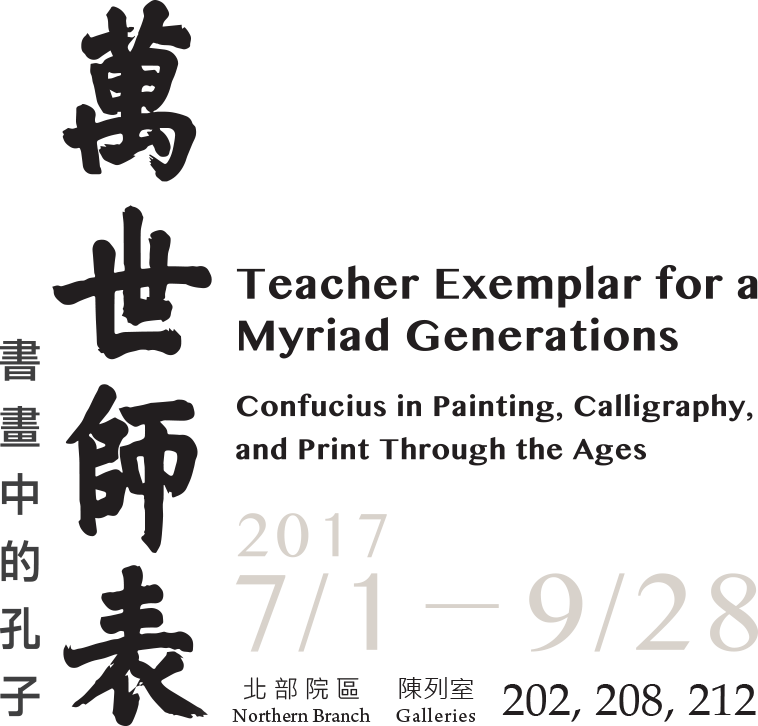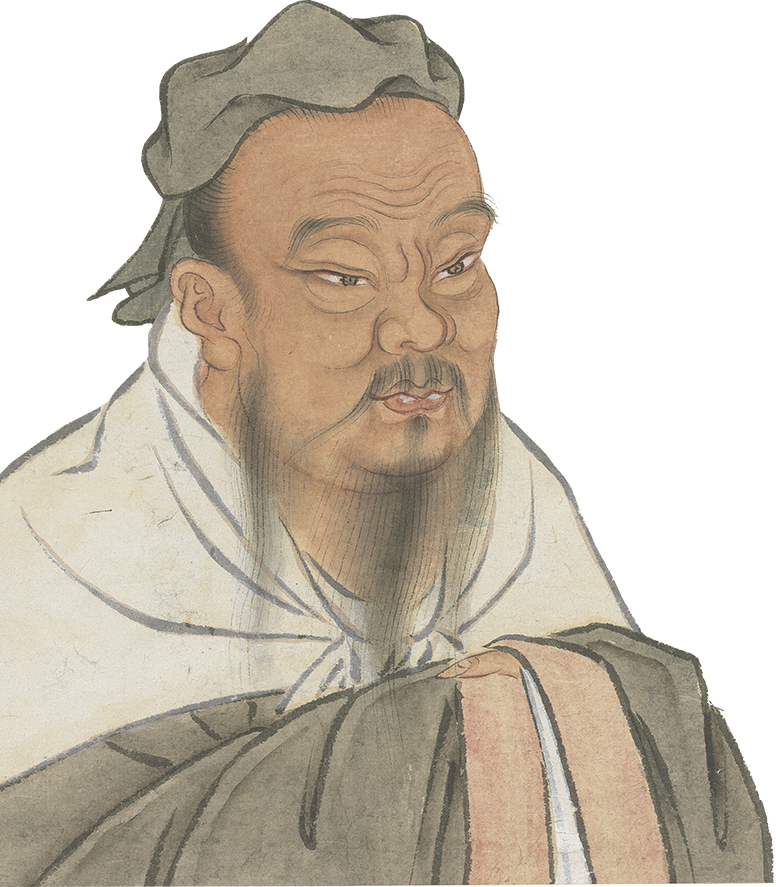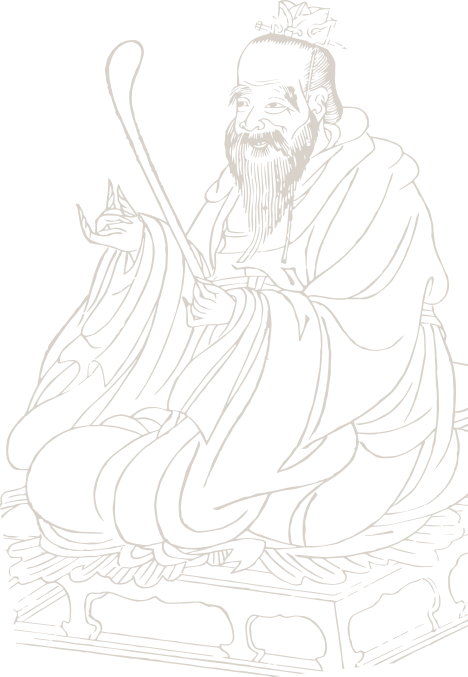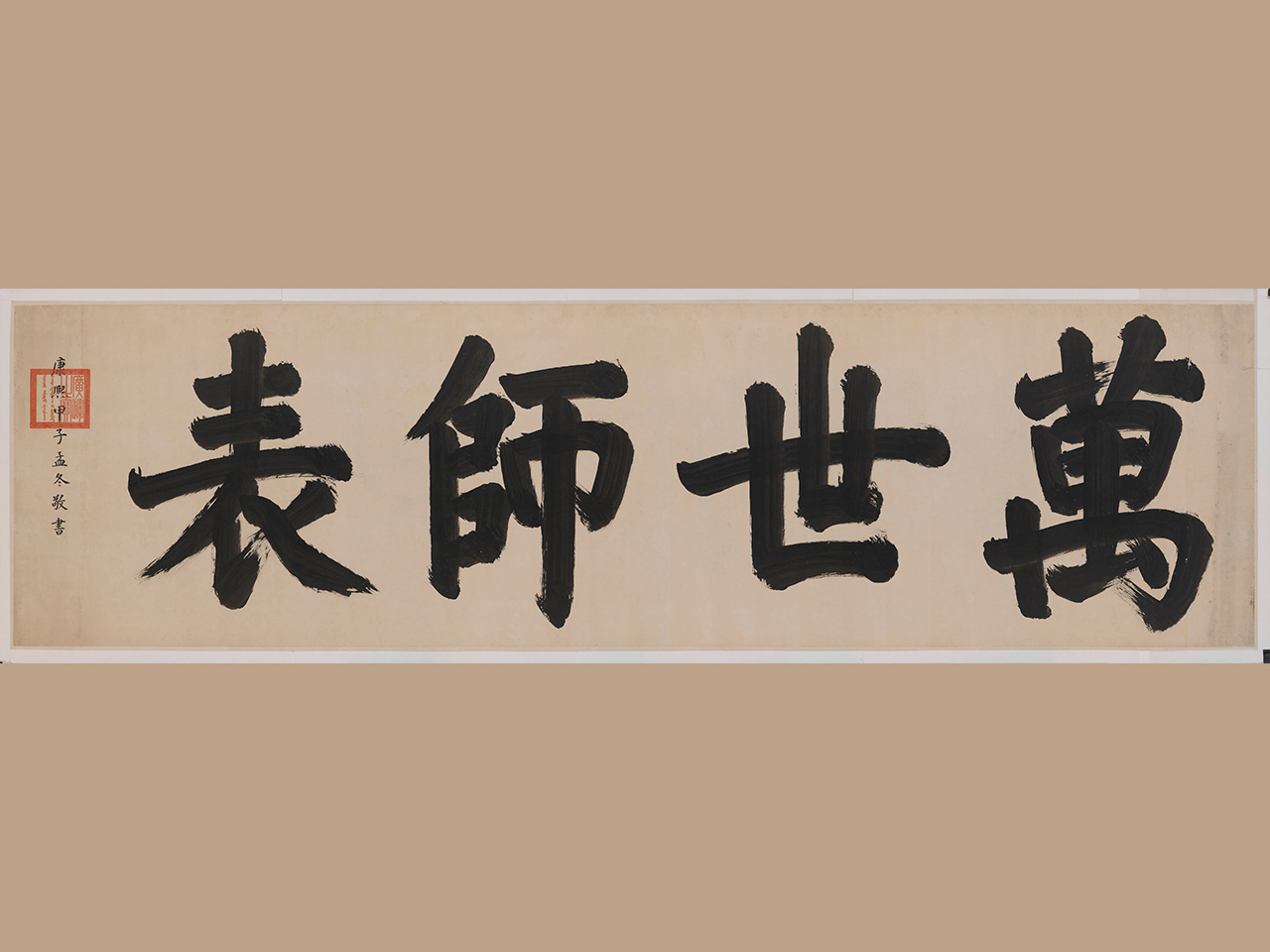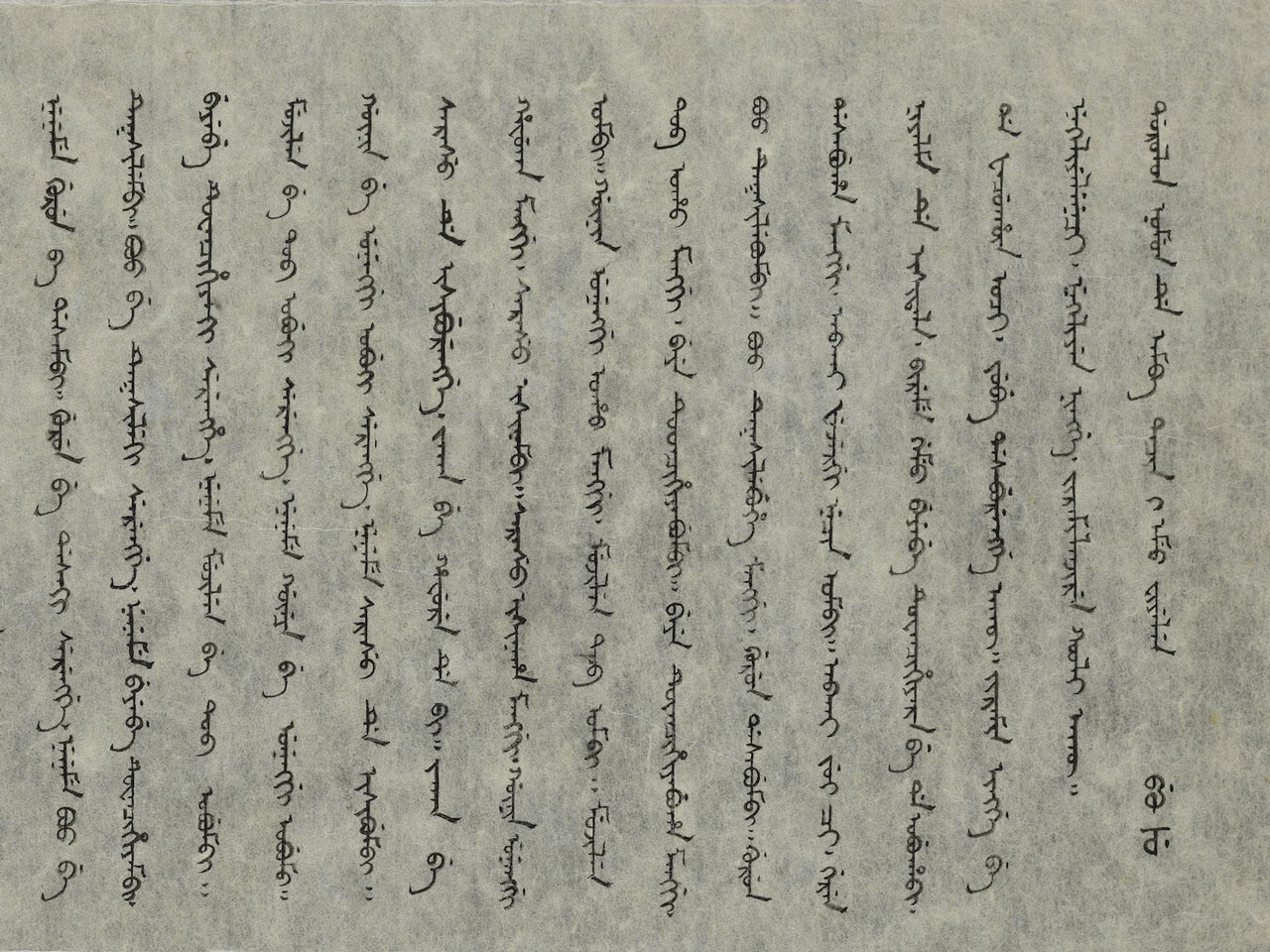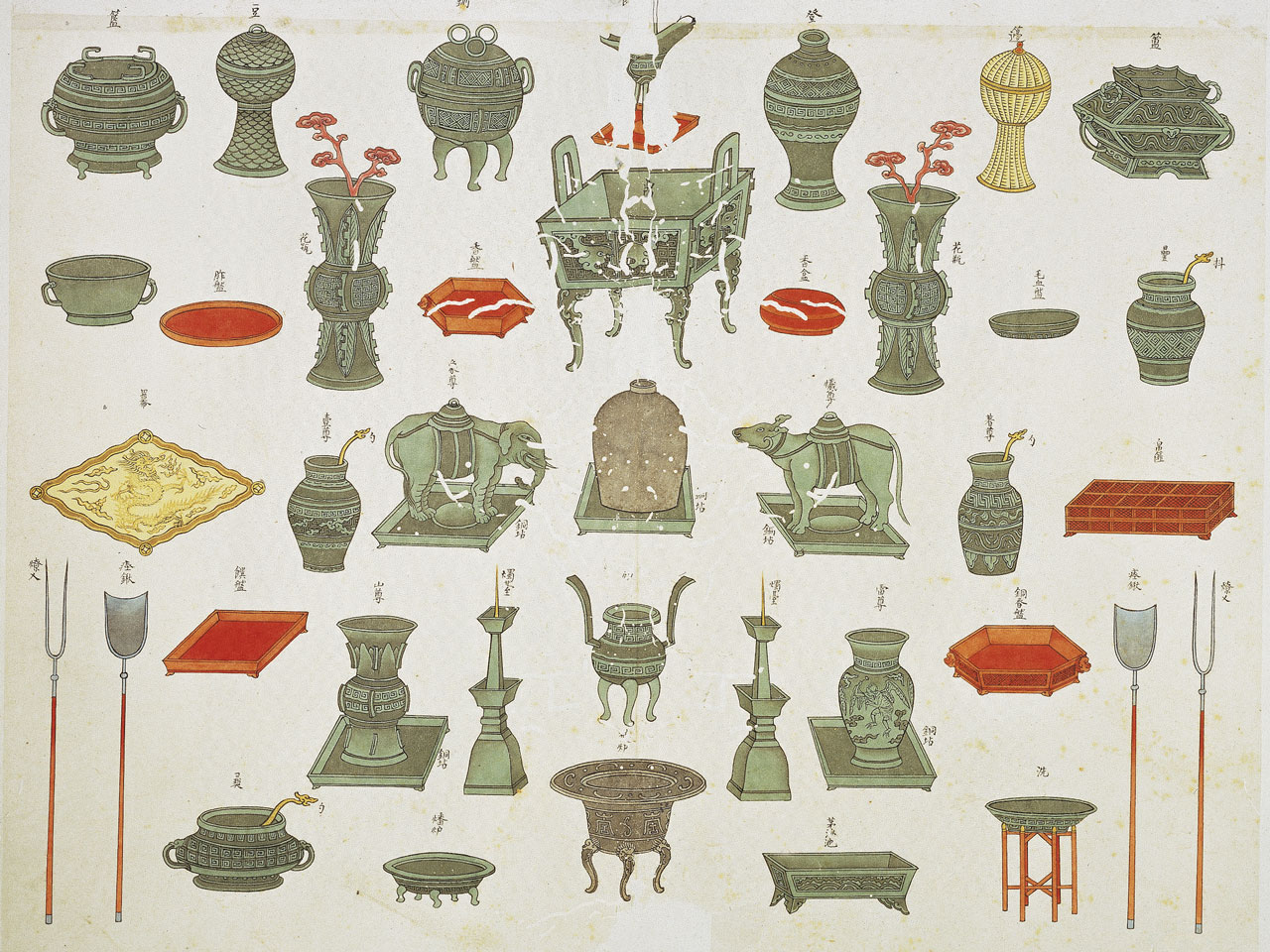Confucius perhaps can be regarded as the person who has influenced China the most. The impact of his thought can be found over the course of Chinese history, including the sayings of various philosophers (such as Xunzi and Mencius), the numerous annotations and commentaries for the Chinese Classics, the sayings of many renowned Confucians who have upheld the spirit of Confucius, and the large number translations into Manchu for the Four Books and Five Classics in the Qing dynasty. In addition, the imperial plaques presented to temples dedicated to Confucius throughout the land show the unparalleled respect and honor bestowed upon Confucius by rulers through the ages.
"Exemplar Teacher for a Myriad Generations" from the Imperial Brush
- Shengzu (1654-1722), Qing dynasty
- Horizontal scroll, ink on paper, 109.2 x 393 cm
Emperor Shengzu, who went by the personal name Aisin Gioro Xuanye, is better known by his reign name, Kangxi. An admirer of Confucian thought and Neo-Confucianism, he also spent much time doing calligraphy, in which he copied from the ancient modelbooks of the Jin and Tang dynasties. He later received instruction from Shen Quan (1624-1686) and learned the running script of Dong Qichang (1555-1636), which he combined with the styles of Song and Yuan dynasty masters.
In Grand Occasion of the Imperial Visit to Lu, Kong Yuqi, a 67th-generation descendant of Confucius, recorded the 1684 visit by the Kangxi emperor on his southern inspection tour to the hometown of Confucius. The emperor also awarded a handscroll with the characters for “Exemplar Teacher for a Myriad Generations” in praise of Confucius. In the following year, an engraving was made and rubbings presented to temples dedicated to Confucius all over the country.
This work, originally an artifact from the family mansion of Confucius' descendants, features character forms that are solid with brushwork steady and having an even force. The lifting of the brush, however, was quick and decisive, making it an excellent example of the Kangxi emperor's large-character calligraphy done with a suspended wrist. The layering of the strokes is clear and the traces of the brush precise and detailed, suggesting it is the original upon which other plaques from the brush of Kangxi are based at various Temples of Confucius.
The Great Learning in Manchu
- Pu Ru (1896-1963), Republican period
- Mounted, ink on paper, 20.5 x 43.2 cm
Pu Ru, better known by his style name Hsin-yu, also had the sobriquet Xishan yishi. A grandson of Yixin, Prince Gong, he was a member of the Qing imperial family and lived in Beijing. He delved into poetry, the Classics and history, and the arts of painting and calligraphy since childhood. He excelled at the latter two, beginning by copying works of the old masters. Pu Ru and Chang Dai-chien were known as "Chang of the South and Pu of the North." Pu later moved to Taiwan and became one of the most important traditional painters in modern Taiwan.
This work, entrusted to the National Palace Museum from the Cold Jade Hall, is a selection from The Great Learning written in official Manchu script, starting from the passage for "Way of the Great Learning" to "There is no example of it." The signature reads, "The above is a passage from the Classic, (signed) Pu Ru." The Manchu rulers of the Qing dynasty firmly upheld the principle of “Confucian orthodoxy as the ruling orthodoxy." They placed much emphasis on studying Confucian Classics to lay a theoretical foundation for their rule of China. The Kangxi emperor (1662-1722) even translated into Manchu the Four Books of Confucianism, which became teaching materials for the daily imperial colloquium on the Chinese Classics. The Confucian notions of cultivating the self, maintaining one's family, ruling the country, and spreading peace throughout the land also strongly influenced Manchu thought and culture.
Illustrated Explanations of Renovating Various Buildings in Taiwan Prefecture
- Jiang Yuanshu (1738-1781), Qing dynasty
- Imprint of the Qianlong reign (1735-1796), Qing dynasty
- 32.3 x 41.1 cm
Jiang Yuanshu (style name Zhongsheng, sobriquet Xiangyan), a native of Changshu in Jiangsu, was a Provincial Student of 1759 who served as the Prefect of Taiwan from 1775 to 1778. From 1776 to 1777, he also was in charge of General Surveillance in the Taiwan Circuit, making many contributions to the island during his tenure as an official.
This work on "Illustrations of Ritual Vessels at the Temple of Confucius" comes from Illustrated Explanations of Renovating Various Buildings in Taiwan Prefecture. In 1776, Jiang noted, "All the vessels used at the Temple of Confucius in Taiwan Prefecture are made of lead-tin bronze, which is of humble quality. The 'dou,' 'bian,' 'fu,' and 'gui' vessels also do not conform to the norms, and many are missing." Therefore, "I, Yuanshu, carefully consulted Confucian regulations and selected artisans in Suzhou to establish a workshop, purchase bronze, create a foundry, and cast instruments for music and the rites. I spent more than 10,000 cash and had them shipped to Taiwan." In the following year, he wrote an inscription and Directors Chen Zuolin (fl. ca. 18th-19th c.) and Lin Chaoying (1739-1816) engraved a stone stele, which is now at the Temple of Confucius in Tainan and an important early document on the veneration of Confucius in Taiwan.
